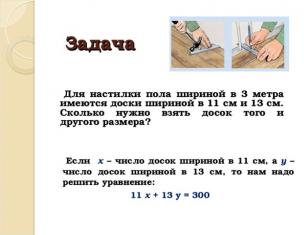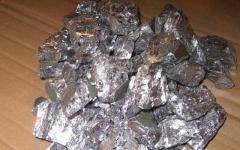Diameter celestial body is about 40 meters
Western astronomers have discovered space object twice the size of the famous Chelyabinsk meteorite, a meeting with which may take place in 2017. The scale of possible destruction may be significantly greater than in the latter case.
According to preliminary calculations by American astronomer Judith Rees of the McDonald Observatory of the University of Texas, the diameter of the new asteroid is about 40 meters, which, if it collides with the surface of our planet, will cause devastating damage several times greater than the consequences of the crash of a smaller meteorite in the Chelyabinsk region in February 2013, reports astronomical astrowatch.net.
A dangerous celestial body was discovered in October 2012 by an observatory in Hawaii. In the same month, he passed at a dangerously close distance from the Earth, 95,000 kilometers, which is equal to the distance to the Moon. Asteroid 2012 TC4 is expected to pass its closest approach to Earth on October 12, 2017.
Now experts are trying to establish the exact orbit of the asteroid and calculate its chances of a collision, which so far, apparently, are quite low - only 0.00055%, but, nevertheless, they still exist.
According to European Space Agency expert Detlef Koshni, the chances of a meteorite colliding with the Earth are minimal—“one in a million.” The same point of view is shared by Makoto Yoshikawa from the Japanese Aerospace Exploration Agency.
Let us recall that two years ago, on February 15, 2013, the largest known celestial body that fell to earth after Tunguska meteorite in 1908.
The flash of light was visible in neighboring regions, as well as in neighboring Kazakhstan. The shock wave broke glass in more than 7 thousand buildings. There was no emergency human casualties, but more than 1.6 thousand people were injured, 52 people were hospitalized.
Scientists estimated the mass of the object before entering the atmosphere at 13 thousand tons, and its size at 19.8 meters.
A few minutes after the explosion (according to eyewitnesses, from 77 seconds to three minutes or more, depending on the distance), a shock wave came to the ground. The impact zone of the shock wave on the surface was about 130 kilometers long and 50 kilometers wide.
The area affected by the shock wave was 6.5 thousand square kilometers.
Only 4-6 tons of meteorite matter reached the ground, which is 0.03-0.05% of the original mass, while 76% evaporated and the rest turned into dust.
A study of the meteorite substance showed that the Chelyabinsk asteroid was one of the ordinary chondrites of type LL5, its age is about 4.45 billion years, approximately at the time of birth it experienced a powerful collision with another object. Chemical analysis showed that traces remained in the meteorite organic compounds containing sulfur and oxygen.
Witnesses of the event interviewed by scientists said that it was painful for them to look at the car. About 25 people out of 1.1 thousand respondents reported that they received burns, 315 felt heat, and 415 felt heat from the fireball's radiation.
The meteorite, called "Chelyabinsk", turned out to be the largest known celestial body to fall to Earth since the Tunguska meteorite in 1908. Such an event occurs on average once every 100 years.
The “Chelyabinsk event” also became significant for politics: it forced the authorities of the United States, Russia and the European Union to once again return to the problem of the asteroid-comet danger.
The Ural meteorite distracted scientists for some time from another space object - an asteroid, which is approaching the Earth at these moments. According to calculations, it will approach its minimum distance to our planet at 23:20 Moscow time. This unique event will be broadcast live on NASA's website. Residents of Asia and Australia, as well as possibly some areas, will be able to see the asteroid Eastern Europe.
In a little more than 2 hours, the DA14 object will pass by the Earth at a distance of 28 thousand kilometers - this is closer than some satellites fly. If this asteroid weighing 130 tons and with a diameter of 45 meters collided with our planet, the explosion would be equal to one thousand Hiroshimas. There was even an assumption that the meteorite that fell in the Urals could be part of this space monster and that other, larger ones would follow it. However, most scientists do not see a connection with the DA14 asteroid and the Ural meteorite.
“As for whether Armageddon threatens us or not, it is now known for certain. All asteroids larger than one kilometer in diameter that bring such a catastrophe to the Earth on a large scale, they are all known and have well-known orbits, they are all cataloged and observed “There is no danger from them,” assured Lidia Rykhlova, head of the space astrometry department at the Institute of Astronomy of the Russian Academy of Medical Sciences.
While they were monitoring the large asteroid, they overlooked the meteorite that fell in the Urals. However, it was almost impossible to see it before entering the atmosphere - neither civilian observatories nor missile defense radars can do this - the size is too small and the speed is too high. The military says that even if such a meteorite is discovered, destroy such objects modern systems Air defense is not yet capable. Already in retrospect, scientists derived data from a celestial body that had already fallen in the Urals - mass several tons, speed 15 kilometers per second, angle of incidence - 45 degrees, shock wave power - several kilotons. At an altitude of 50 kilometers, the object collapsed into 3 parts and almost completely burned up in the atmosphere.
“No more than 10 meters in diameter, it flew at supersonic speed and therefore generated a shock wave. This shock wave caused all this destruction, people were injured not by meteorite fragments, but by the shock wave. Now, if a supersonic plane would have passed on the same altitude, for example, God forbid above Moscow, the destruction would have been the same,” said the deputy director of the State Astronomical Institute. Sternberg Sergey Lamzin.
Any space object that reaches the Earth's atmosphere and leaves a trace in it is called a meteorite by scientists. As a rule, they are small in size and, moving in the air at a speed of several kilometers per second, completely burn out. And yet, about 5 tons of cosmic matter fall to Earth every day in the form of dust and small grains of sand. Almost all space guests come to us from the so-called asteroid belt, which is located between the orbits of Mars and Jupiter.
“A kind of trash heap of the Solar system, where all the debris is concentrated. Collisions between asteroids occur in this belt. As a result, certain debris is formed that can acquire an orbit that intersects the orbit of the Earth,” said Mikhail Nazarov.
However, some scientists believe that it was not a meteorite that fell near Chelyabinsk. They are confident that no one will ever find any debris, just as the fragments of the Tunguska meteorite were not found. We are most likely talking about a cooled comet, which consists of frozen gases.
“If the nucleus of a first-generation comet invades the Earth, then it burns up almost completely in the Earth’s atmosphere, and it is impossible to find any remains on the surface. This is similar to the Tunguska phenomenon, when no remains of the body were found, but there was a large fall of forest over a large area and the trees were all heavily charred,” said Vladislav Leonov, a researcher at the Department of Space Astrometry at the Institute of Astronomy of the Russian Academy of Sciences.
Nevertheless, the search for meteorite remains near Chelyabinsk continues. At the same time, not only rescuers and scientists are searching; now dozens of meteorite hunters have already rushed to the area of the supposed fall. The price of some of them on the black market can reach several thousand rubles per gram.
According to scientists, the first to see the fall of a space object called WF9 will be residents of Great Britain. The asteroid was discovered back in November 2016, but reports of the threat have only now appeared.
ON THE TOPIC
The object, with a diameter of 500 meters to a kilometer, is expected to reach Earth on February 25, reports the Daily Mail. The giant was 51 million kilometers away from us.
Astronomer Damir Demin claims that if an asteroid hits Earth, coastal cities will be covered by giant tsunamis. The expert is confident that it will fall on our planet, reports the online publication M24. According to him, WF9 flew out of the Nibiru system. According to doomsday theories, Nibiru will destroy life on Earth.
However, not all astronomers share the pessimistic sentiments of their colleagues. General Director of the non-profit partnership Center for Planetary Protection, Anatoly Zaitsev, claims that if an object is significant, scientists immediately calculate its trajectory.
“And if he really did threaten, then not only NASA would know about him. Therefore, for now the information is very doubtful to draw any conclusions,” Nation News quotes the specialist. There are also a number of his colleagues who are confident that the asteroid will simply burn up in the atmosphere of our planet and will not harm anyone.
NASA detection systems were unable to detect the approach of asteroid 2019 OK to Earth. It became known when the distance between it and the Earth was no more than 65 thousand kilometers. The asteroid was spotted by observatory staff in Britain. The diameter of asteroid 2019 OK is comparable to the size of a football field. After this incident, NASA's tracking system was criticized by experts.
Previously, an asteroid larger than the Cheops pyramid was approaching the Earth, RIA Novosti reported this with reference to NASA data. The diameter of asteroid 2019 OU1 is 160 meters, which is 20 meters larger than the famous Egyptian pyramid. On August 28, 2019, it approached Earth 40 times closer than Venus and missed our planet at a distance of about a million kilometers.
But what if a dangerous space object fell to Earth? Its size is capable of triggering a series of large tsunamis or the complete destruction of one of the European countries. A smaller, but also potentially dangerous, celestial body passed at a distance of 7.3 million kilometers on July 25, according to the ISON system.
What meteorites and asteroids have already fallen to earth?
Russia has already become a place for meteorites and asteroids to fall. The first case was recorded on June 17, 1908 in the Krasnoyarsk Territory, near the Podkamennaya Tunguska River. The power of the explosion when the Tunguska meteorite fell was 40-50 megatons, the shock wave felled 2000 square kilometers of forest. Glass was broken 200 kilometers from the epicenter, and seismic vibrations were recorded at stations in cities such as Irkutsk, Tashkent, Tbilisi and Jena (Germany). The most interesting thing is that the meteorite fragments were never found.
Wikipedia.org
The most “severe” case occurred on February 12, 1947, near the village of Beitsukhe in the Primorsky Territory. The weight of the fragments found was 60-100 tons, and the body itself had an iron composition. The Sikhote-Alin meteorite, as it was nicknamed because it fell in the mountains of the same name, it split in the atmosphere and scattered to the ground in the form of a meteor shower. Now its fragments can be seen in the Kaluga Planetarium.
The recent fall of fragments of an asteroid, which is about 4.5 billion years old, occurred in the territory Chelyabinsk region February 15, 2013. The fall of fragments of the Chelyabinsk meteorite was accompanied by strong shock waves, which, according to NASA estimates, amounted to 300-500 thousand kilotons. The largest fragment, weighing 654 kilograms, was recovered from the bottom of Lake Chebarkul.
 Fragment of the Chelyabinsk meteorite.TASS / Artem Korotaev
Fragment of the Chelyabinsk meteorite.TASS / Artem Korotaev
As a result of meteorite fragments falling to the ground, 1,615 people were injured - most of them from fragments of windows and other structures provoked by the blast wave from Chelyabinsk. Buildings were damaged for 490 million rubles, and general damage amounted to almost one billion. This celestial body was not discovered before it entered the Earth's atmosphere.
Now imagine how much damage the fragments of fairly small meteorites caused. What could happen if asteroid 2019 OU1 changes its trajectory and still falls to the ground?
How to escape when an asteroid falls to Earth?
According to scientists, throughout its existence, the Earth has taken on at least six large asteroids. This is evidenced by the huge craters that exist on our planet. The largest is located in South Africa, its diameter is 300 kilometers! This is 6% of total area African country. It is logical that an asteroid collision with the Earth can occur in the 21st century. How to behave if a catastrophe on a planetary scale turns out to be inevitable?
- Find shelter. All-Russian Center public opinion(VTsIOM) conducted a survey on the topic nuclear war and found out that 71% of Russians do not know about the existence of specific bomb shelters in their city. Only 15% know where to hide, but most of them are men over 35 years old. This means that people simply will not understand where to run if a disaster occurs. You should look where in your city or locality there is a bomb shelter. Big cities Where there is a metro it’s easier. You can always take the subway, but the capacity of metro stations is small, especially those with one exit and no transfer points.
- Take necessary things with you. This can be warm clothes, medicines (antiseptics, bows, painkillers, anti-inflammatory), water, non-perishable food (cereals, canned food, butter, sugar, salt, powdered milk), hygiene products, threads, a flashlight, a personal protection, important documents.
- Stay away from windows and other glass structures. If you see a cosmic body flying in the sky or receive a warning about danger, move away from the windows! The fall or rupture of a meteorite/asteroid in the sky will provoke a shock wave that will certainly destroy all glass partitions. You may be injured by flying debris and even be seriously injured.
Asteroids, which in the future may approach the Earth at a distance of 7.5 million km, are considered potentially dangerous to the Earth. Our planet has collided with these cosmic bodies more than once. Today we will talk about how dangerous it is for an asteroid to fall to Earth and is there a likelihood of a large-scale catastrophe in the foreseeable future? First, a little historical background.
An asteroid (from Greek “like a star,” “star”) is also called a minor planet. It is a celestial body whose size exceeds 30 km. Some of them have their own satellites. Many asteroids travel across our solar system. 3.5 million years ago, a huge number of asteroids fell on Earth, which led to global changes.
Traces of an ancient asteroid
In the spring of 2016, geologists in Australia discovered traces of an asteroid impact, the diameter of which was about 30-40 km. That is, it is comparable in size to a small satellite. The fall caused an 11-magnitude earthquake, a tsunami and large-scale destruction. It was probably one of the asteroids, as a result of which not only the beginnings of life were formed on earth, but also the entire diversity of the biosphere.
There is also an opinion that the mysterious disappearance of dinosaurs occurred due to the fall of a large asteroid to Earth. Although this is just one of many versions...
This is interesting! The ancient impact was formed as a result of an encounter with a meteorite. Its depth once reached 20 km. The meteorite impact caused a tsunami and climate change similar to a nuclear winter. In addition, the temperature on Earth could drop by 26 degrees for up to 16 years.
Chelyabinsk meteorite
The fall of an asteroid to Earth in February 2013 became one of the most discussed incidents not only in Russia, but throughout the world. The asteroid, whose mass reached 16 tons, partially burned up in the Earth’s atmosphere, but a relatively small part of it fell near Chelyabinsk, fortunately, flying over it.
That year it flew over the Ural city, which served as the basis for its name. The body itself turned out to be quite ordinary and consisted of chondrites, but the time and place of its fall aroused interest. None of the asteroids that fell to Earth caused such damage, since they did not fall so close to a densely populated area. The meteorite's mass was 6 tons. Falling into the lake caused broken glass in 7,000 buildings. 112 people were hospitalized with burns, and several more people turned to doctors for help. In total, the shock wave covered 6.5 thousand square meters.
The enormous damage caused by the asteroid could have been much more significant if the celestial stone had fallen not into the water, but onto land. Fortunately, the fall of the asteroid to the earth did not turn into a large-scale disaster.
What is dangerous about a large meteorite falling to Earth?
According to scientists' calculations, the fall of an asteroid to Earth can lead to enormous damage if a body about 1 km in size falls onto the Earth's land. First of all, a funnel with a diameter of approximately 15 km will form, which will cause dust to enter the atmosphere. And this, in turn, can lead to large-scale fires. Dust, heated by the sun, will reduce ozone levels and accelerate chemical reactions in the stratosphere, will reduce the amount of sunlight reaching the planet's surface.
Thus, the consequences of an asteroid falling to Earth are very serious. Global temperature The earth will fall at 8 0 C, causing an ice age. But to lead to the extinction of humanity, the asteroid would have to be 10 times larger.
Giant danger
Scientists recently found out that centaurs should be included in the list of potential threats to our planet - these are giant asteroids with a diameter of 50 to 100 km. The gravitational field of other planets throws them towards our Earth every 40-100 thousand years. Their number has now increased sharply. Scientists are constantly calculating whether a giant asteroid will fall to Earth in the near future, although calculating the trajectory of the centaurs’ fall is a very difficult task.
In addition, the list of potential threats to the Earth includes:
- supervolcanic eruption;
- global pandemic;
- asteroid impact (at 0.00013%);
- nuclear war;
- environmental disaster.
Will an asteroid hit Earth in October 2017?
The main question that at the moment Scientists are worried about the danger posed by an asteroid whose size is 2 times larger than Chelyabinsk meteorite. There is a possibility that an event will occur in October 2017 that will cause a disaster on a much larger scale than the 2013 strike. Astronomer Judith Rees claims that the asteroid's diameter reaches 40 km. It was dubbed object WF9.
A dangerous celestial body was discovered by scientists in Hawaii back in 2012. That year it passed at a very close distance from the Earth, and on October 12, 2017 it will approach the most dangerous distance for our planet. Scientists believe that if an asteroid actually hits Earth, the British will be the first to see it.
At the moment, scientists are actively studying the possibility of a collision. True, the probability of an asteroid falling to Earth is very small and, according to researchers, is 1 in a million. However, it still exists.
Constant danger
It should be noted that certain asteroids of different sizes are constantly flying past the Earth. They are potentially dangerous, but very rarely actually fall to Earth. So, at the end of 2016, a body flew past the Earth at a distance of 2/3 of the distance from a small truck.
And January 2017 was marked by the passage of a celestial body reaching the size of a 10-story building. It flew within 180 thousand km of us.








